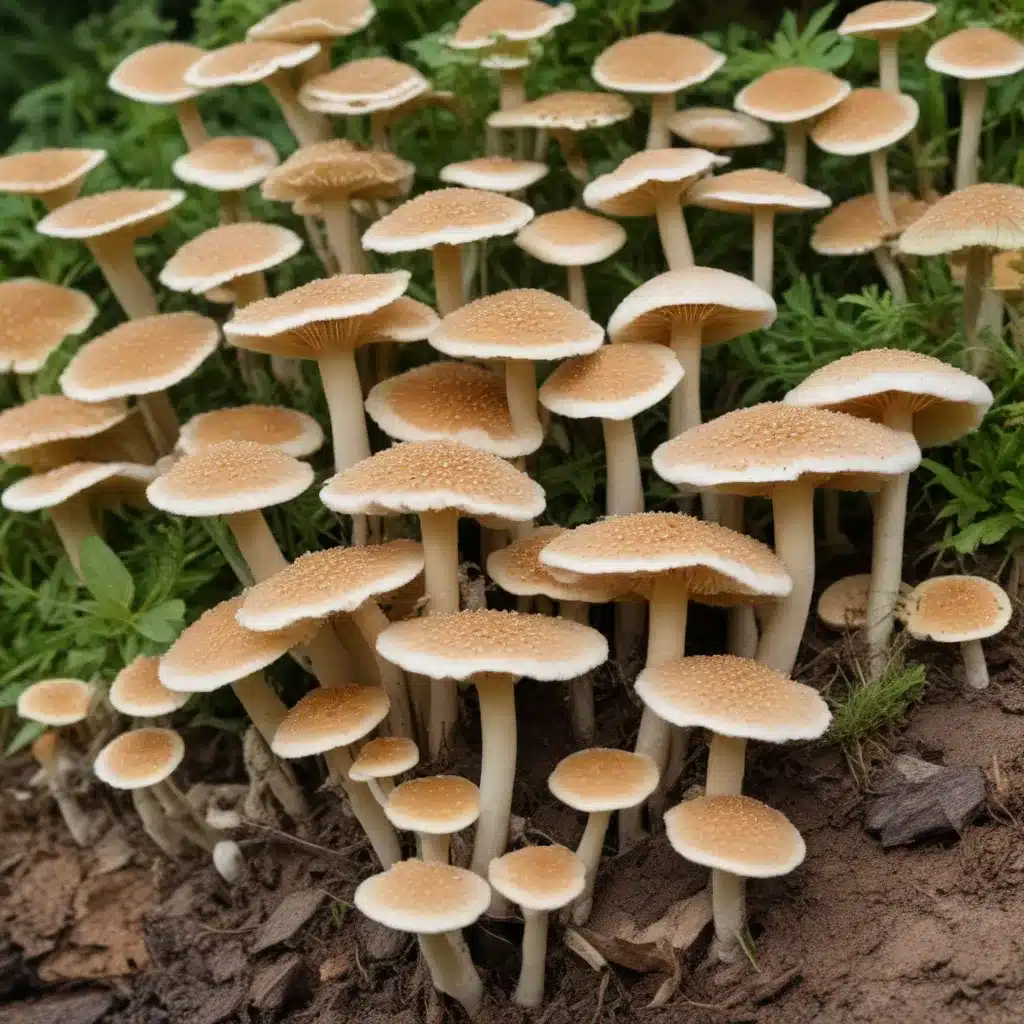
The rapid advancement of molecular tools has revolutionized our understanding of the microbial world, particularly when it comes to uncovering the hidden diversity of fungi. In the realm of urban environments, a group of fungi known as the Mucoromycotina has emerged as a focal point of intense research interest. These often-overlooked microorganisms are not only ubiquitous inhabitants of city landscapes but also play pivotal roles in ecosystem processes.
Mucoromycotina: Unraveling the Mysteries
The Mucoromycotina represent a distinct subphylum within the fungal kingdom, diverging from the more widely studied Glomeromycotina, the arbuscular mycorrhizal fungi. While the Glomeromycotina have long been recognized for their symbiotic associations with plant roots, the Mucoromycotina have remained somewhat enigmatic, their ecological significance often overshadowed. However, the application of novel fungal primers and high-throughput sequencing techniques has begun to shed light on the diverse and multifaceted roles these fungi play in urban environments.
Fungal Diversity in the City
Urban landscapes, with their unique environmental conditions and anthropogenic influences, harbor a remarkable diversity of fungal communities. Mucoromycotinian fungi, in particular, have been found to thrive in these settings, occupying a wide range of ecological niches. From decomposing organic matter to colonizing built structures, these fungi demonstrate a remarkable adaptability to the challenges posed by the urban milieu.
Factors Shaping Urban Mycobiomes
The composition and structure of urban fungal communities are influenced by a complex interplay of biotic and abiotic factors. Factors such as soil pH, moisture levels, temperature fluctuations, and the availability of organic substrates can all shape the Mucoromycotinian diversity within a given city. Additionally, the degree of urbanization, land use patterns, and the presence of green spaces can significantly impact the distribution and abundance of these fungi.
Spatial and Temporal Dynamics
The fungal communities inhabiting urban environments are not static; they exhibit dynamic shifts in composition and structure over both spatial and temporal scales. Mucoromycotinian fungi may display distinct distribution patterns, with certain species thriving in specific urban microhabitats. Furthermore, seasonal variations, disturbance regimes, and anthropogenic activities can all contribute to the temporal dynamics of these fungal communities.
Advancing Fungal Exploration
The application of novel fungal primers and high-throughput sequencing techniques has been instrumental in unveiling the hidden diversity of Mucoromycotinian fungi in urban environments. These advanced molecular tools have enabled researchers to delve deeper into the complex web of fungal interactions, uncovering previously undetected species and elucidating their ecological roles.
Primer Design and Sequencing Approaches
The selection of appropriate fungal primers is crucial for accurately capturing the Mucoromycotinian diversity within a given sample. Researchers have been exploring various primer sets, targeting specific regions of the fungal genome, to optimize the detection and characterization of these often-overlooked fungi. Coupled with the power of high-throughput sequencing platforms, these advanced molecular techniques have opened new avenues for exploring the urban mycobiome.
Bioinformatic Pipelines and Data Analysis
The vast amounts of sequence data generated by modern sequencing technologies require robust bioinformatic pipelines to process, analyze, and interpret the information. From operational taxonomic unit (OTU) clustering to taxonomic assignment and diversity metrics, these computational tools have become essential for unveiling the intricate patterns and dynamics of Mucoromycotinian fungal communities in urban settings.
Unlocking the Ecological Significance
As our understanding of Mucoromycotinian fungi in urban environments continues to evolve, the ecological significance of these often-overlooked microorganisms is becoming increasingly apparent. Their roles in nutrient cycling, decomposition, and potentially even plant-fungal symbioses are gradually being elucidated, highlighting the importance of these fungi in the overall functioning of urban ecosystems.
Distribution and Abundance
The distribution and abundance of Mucoromycotinian fungi across the urban landscape can provide valuable insights into their ecological niches and the factors that shape their community structure. Uncovering the spatial patterns and temporal dynamics of these fungi can help us better understand their responses to environmental changes and anthropogenic pressures.
Functional Roles and Ecosystem Services
Beyond their distribution, the functional roles of Mucoromycotinian fungi within urban environments are of growing interest. These fungi may contribute to the decomposition of organic matter, the cycling of nutrients, and potentially even the maintenance of plant communities. Unraveling these functional relationships can shed light on the vital ecosystem services provided by these often-overlooked microorganisms.
Implications for Urban Ecology and Management
The insights gained from the exploration of Mucoromycotinian fungi in urban environments have far-reaching implications for urban ecology and management. By understanding the diversity, distribution, and ecological significance of these fungi, we can better inform urban planning, green infrastructure design, and sustainable land-use practices.
Informing Urban Landscape Design
The knowledge of Mucoromycotinian fungal communities can help guide the creation of urban green spaces, the selection of plant species, and the management of urban soils. Incorporating this information into urban landscape design can promote the overall health and resilience of urban ecosystems.
Sustainable Urban Management Strategies
Recognizing the roles of Mucoromycotinian fungi in urban environments can also inform sustainable management strategies, such as the optimization of organic waste decomposition, the enhancement of soil fertility, and the mitigation of environmental stressors. By leveraging the ecological functions of these fungi, urban planners and managers can work towards more sustainable and nature-based solutions.
In conclusion, the application of novel fungal primers and high-throughput sequencing techniques has revolutionized our understanding of the Mucoromycotinian diversity in urban environments. These often-overlooked fungi play crucial roles in the overall functioning of city landscapes, and their exploration holds the key to unlocking more sustainable and resilient urban ecosystems. As we continue to delve deeper into the hidden world of urban mycobiomes, the insights gained will undoubtedly shape the future of urban ecology and management, benefiting both the environment and the communities that thrive within it. For more information on the ecological advantages of trees and sustainable landscape design strategies, visit TriCounty Tree Care.


